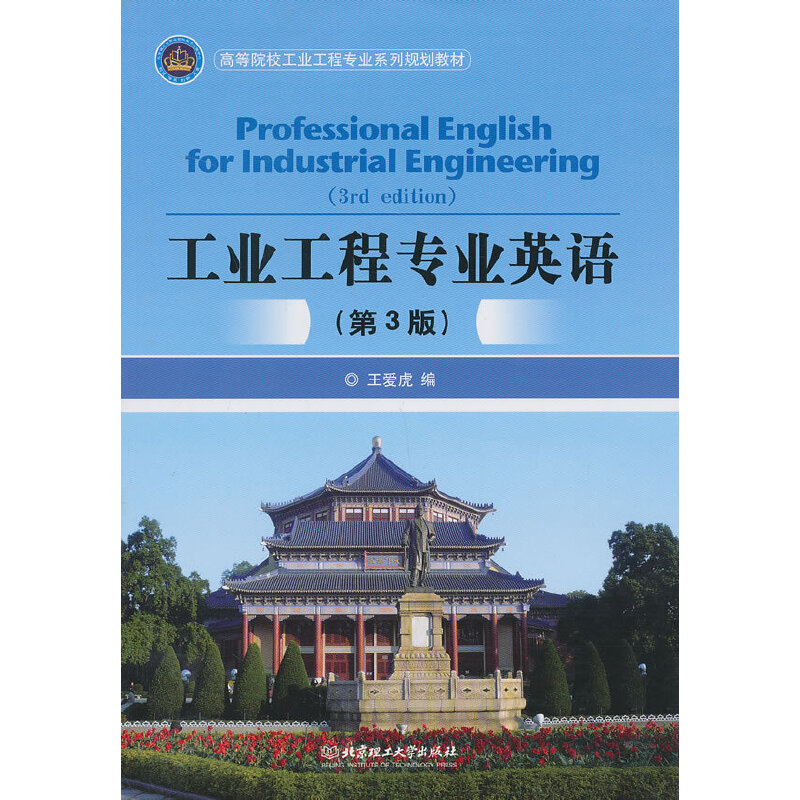游戏英语教程 / 十二五高等学校动漫游戏专业设计丛书
作者: 房晓溪主编
出版时间:2013年1月
出版社:北京国铁天勤文化发展有限公司
- 北京国铁天勤文化发展有限公司
- 9787113159702
- 1-1
- 39977
- 0047155980-7
- 16开
- 2013年1月
- 328
- 220
- TP311.5
- 游戏
- 本专科
《游戏英语教程》适合作为高等学校动漫游戏专业学生的教材,也可作为动漫游戏爱好者的参考用书。本书由北京吉利大学房晓溪任主编。
PART Ⅰ INTRODUCTION
Chapter 1 What Is Game
1.1 Decision Making
1.2 Goals
1.3 Opposition
1.4 Managing Resources
1.5 Game Tokens
1.6 Information
Chapter 2 GameSpy's 7 Most Influential People in Gaming
2.l EdFries (Microsoft)
2.2 Alexey Pajitnov (Microsoft)
2.3 Gabe Newell (Valve Software)
2.4 John Romero (Monkcystone)
2.5 John Carmack (ID Software)
2.6 Sid Meier (Firaxis Games)
2.7 Shigeru Miyamoto
Chapter 3 The Type of Game
3.1 The Type of Game Design
3.2 Sports Games
3.3 Fighting Games
3.4 Puzzle Games
3.5 Real-time Strategy Games
3.6 Role-playing Games
3.7 First-person and Third-personAction Games
3.8 Simulations
Chapter 4 Fundamentals of Computers
4.1 Cathode Ray Tube Technology
4.2 Image Properties
PART Ⅱ MACHINATE
Chapter 5 The Base
5.1 Starting Points
5.2 Establishing Focus
5.3 Player Character Concepts
5.4 Types of Props and Their Use
5.5 Types of Items/Power-ups and Placement
Chapter 6 Level
6.1 Planning and Building
6.2 Avoiding Common Level Mistakes
6.3 The Process
6.4 Level Separation
Chapter 7 SeripUng
7.1 Scripting in Games
7.2 Scripting Technology Choices
7.3 Using Trigger
Chapter 8 Documents
8.1 The Necessary of Game Development Documents
8.2 The Writing Style
8.3 Story Bible
8.4 The Sections
8.5 Inauspicious Design Documents
PART Ⅲ ART
Chapter 9 Cartoon-looking Rendering of 3D scenes
9.1 Introduction
9.2 Algorithm
PART Ⅵ PROGRAM
Chapter 10 3D Math
10.1 1D Mathematics
10.2 Vector--A Geometric Definition
10.3 Transforming an Object vs. Transforming the Coordinate Space
10.4 What Is Orientation
Chapter 11 What Language Do I use
11.1 C
11.2 C++
11.3 Should I Learn C++, or Should I Start with C
11.4 Assembly
11.5 Pascal
11.6 Visual Basic
11.7 Java
11.8 Tools
11.9 Conclusion
Chapter 12 Basic Concepts in DirectPlay
12.1 Introduction
12.2 Creating and Managing Sessions
12.3 DirectPlay Network Communication
12.4 Communicating with DirectPlay Objects
12.5 DirectPlay Lobby Support
Chapter 13 Client/Server Sessions
13.1 Introduction
13.2 Initiating a Client/Server Session
13.3 Selecting a Service Provider for a Client
13.4 Selecting a Client/Server Host
13.5 Connecting to a Client/Server Session
13.6 Managing a Client/Server Session
13.7 Normal Client/Server Game Play
13.8 Leaving a Client/Server Session
13.9 Terminating a Client/Server Session
Chapter 14 DirectPlay Lobby
14.1 Introduction
14.2 DirectPlay Lobby Architecture
14.3 Lobby Servers
14.4 Lobby Clients
14.5 Lobbyable Applications
14.6 Launching a Lobbyable Application
Chapter 15 DirectPlay Callback Functions and Multithreading Issues
15.1 Introduction
15.2 DirectPlay Do Work Mode
15.3 DirectPlay Thread Pool
15.4 DirectPlay Networking Callbacks
Chapter 16 Engine Solutions and the Unreal Engine
Chapter 17 Direct3D Overview
17.1 Introduction
17.2 The REF Device
17.3 D3DDEVTYPE
Chapter 18 Model Representation
18.1 Introduction
18.2 Vertex Formats
18.3 Triangles
18.4 Indices
Chapter 19 Vertex/Index Buffers
Chapter 20 Bitmap Fonts
Chapter 21 Your First Polygon
Chapter 22 Blending
22.1 The Blending Equation
22.2 Blending in OpenGL
22.3 Note
22.4 Alpha from Texture Map
Chapter 23 Advanced Collision Detection Techniques
Chapter 24 Collision Detection and Particle Interaction
24.1 Introduction
24.2 A Quick Overview
24.3 An Example
24.4 Block Structure
24.5 Notes on Block Maps
Chapter 25 Wu Anti-aliased Lines
25.1 How Does It Work
25.2 What Would the Ultimate Algorithm Be
25.3 A More Sensible Algorithm
25.4 Drawing the End Points
25.5 Special Cases
Chapter 26 Real-time Dynamic Level of Detail Terrain Rendering with ROAM.
26.1 Triangle Fanning
26.2 GeoMorphing
26.3 Frame Coherence
26.4 Supporting Larger Topologies
Chapter 27 Fast Computation










